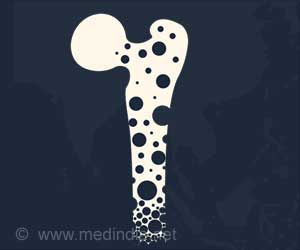Scientists from Washington University in St.Louis are in the process of developing a 'golden' bullet for cancer, which will use gold nanoparticles to kill the tumours.
Scientists from Washington University in St.Louis are in the process of developing a 'golden' bullet for cancer, which will use gold nanoparticles to kill the tumours.
The researchers- including Dr. Younan Xia, James M. McKelvey, Michael J. Welch- described the successful photothermal treatment of tumours in mice by using gold bullets, which are gold nanocages that, when injected, selectively accumulate in tumours.When the tumours are later bathed in laser light, the surrounding tissue is barely warmed, but the nanocages convert light to heat, killing the malignant cells.
"We saw significant changes in tumour metabolism and histology, which is remarkable given that the work was exploratory, the laser 'dose' had not been maximized, and the tumors were 'passively' rather than 'actively' targeted," said Welch.
The nanocages themselves are harmless.
"Gold salts and gold colloids have been used to treat arthritis for more than 100 years. People know what gold does in the body and it's inert, so we hope this is going to be a nontoxic approach," said Welch.
"The key to photothermal therapy is the cages' ability to efficiently absorb light and convert it to heat," said Xia.
Advertisement
They are coloured by something called a surface plasmon resonance. Some of the electrons in the gold are not anchored to individual atoms but instead form a free-floating electron gas, explained Xia.
Advertisement
This collective oscillation, the surface plasmon, picks a particular wavelength, or colour, out of the incident light, and this determines the colour we see.he conversion of light to heat arises from the same physical effect as the colour.
The resonance has two parts. At the resonant frequency, light is typically both scattered off the cages and absorbed by them.
By controlling the cages' size, the researchers tailor them to achieve maximum absorption.
The cells that line a tumour's blood vessel, normally packed so tightly they form a waterproof barrier, are disorganized and irregularly shaped, and there are gaps between them.
The nanocages infiltrate through those gaps efficiently enough that they turn the surface of the normally pinkish tumor black.
The researchers found that in the nanocage-injected mice, the skin surface temperature increased rapidly from 32 degrees Celsius to 54 degrees.
In the buffer-injected mice, however, the surface temperature remained below 37 degrees Celsius (98.6 degrees Fahrenheit).
Then the researchers observed that the tumours of nanocage-injected mice were significantly fainter on the PET scans than those of buffer-injected mice, indicating that many tumor cells were no longer functioning.
The tumours in the nanocage-treated mice were later found to have marked histological signs of cellular damage.
The study has been published in the journal Small. (ANI)
Source-ANI
SAV









